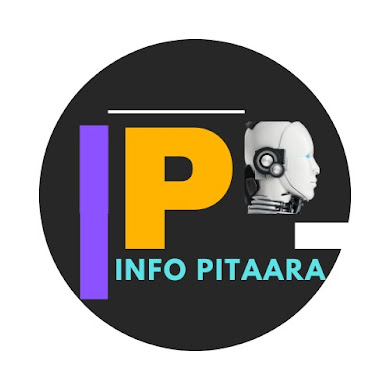Title: What is Digital Literacy? Why It Matters in 2025
Introduction In the rapidly evolving digital world, the concept of digital literacy has emerged as an essential life skill. From education to employment, from communication to civic participation, digital literacy is now a foundation upon which modern societies thrive. But what exactly is digital literacy? And why is it especially important in the year 2025? This comprehensive blog explores the definition, scope, importance, and impact of digital literacy in today’s world, with a particular focus on the future.
1. What is Digital Literacy?
1.1 Definition Digital literacy refers to the ability to effectively and critically navigate, evaluate, and create information using a range of digital technologies. It includes the skills needed to use devices such as smartphones, tablets, laptops, and desktops, as well as the ability to work with software applications, social media, and online communication platforms.
1.2 Components of Digital Literacy
Technical Skills: Proficiency in using digital devices and software.
Information Literacy: Ability to find, evaluate, and use information online.
Media Literacy: Understanding how media content is created and consumed.
Communication Skills: Using digital tools to communicate effectively.
Digital Ethics and Responsibility: Understanding online privacy, safety, and responsible behavior.
Critical Thinking: Evaluating online sources, identifying misinformation.
1.3 Digital Literacy vs. Computer Literacy While computer literacy refers mainly to knowing how to operate computers and software, digital literacy encompasses a broader set of competencies including online communication, digital content creation, and cybersecurity awareness.
2. The Evolution of Digital Literacy
2.1 From Basic Computing to Advanced Digital Competence In the early 2000s, digital literacy primarily meant being able to use a computer and browse the web. Over the past two decades, it has evolved to include mobile apps, cloud computing, artificial intelligence, and more.
2.2 The Impact of the COVID-19 Pandemic The global pandemic accelerated digital transformation. Schools moved online, businesses went remote, and digital services became the norm. This highlighted the digital divide and made digital literacy a necessity, not a luxury.
2.3 Role of Governments and Institutions Many governments and educational institutions have launched initiatives to promote digital literacy. For example, India’s "Digital India" campaign aims to empower citizens with digital tools and knowledge.
3. Why Digital Literacy is Crucial in 2025
3.1 The Rise of AI and Automation With artificial intelligence (AI) and automation becoming integral parts of workplaces, individuals must understand how to work alongside machines, analyze data, and adapt to new tools.
3.2 Hybrid Work Culture The future of work is hybrid. Employees are expected to manage digital collaboration tools, video conferencing, cloud-based platforms, and cybersecurity protocols.
3.3 Online Education and Lifelong Learning Education is increasingly digital. From e-learning platforms to virtual classrooms, students and educators need digital skills to thrive.
3.4 Digital Economy and Entrepreneurship Digital platforms have enabled gig economy jobs, freelancing, and online businesses. Entrepreneurs need to understand SEO, digital marketing, data analytics, and e-commerce platforms.
3.5 Civic Engagement and Digital Citizenship Citizens engage digitally with governments, social causes, and public discourse. Digital literacy ensures informed participation and awareness.
3.6 Cybersecurity Awareness Cyber threats are rising. Everyone needs to understand online safety, data protection, password management, and recognizing phishing or scams.
4. Core Digital Skills Needed in 2025
Basic IT skills (Windows, macOS, file management)
Proficiency in productivity tools (MS Office, Google Workspace)
Email and digital communication etiquette
Using video conferencing apps (Zoom, Google Meet, Teams)
Internet browsing and research
Social media management
Cloud computing basics (Google Drive, Dropbox)
Data literacy and visualization
Basic coding (HTML, Python)
Mobile app usage
Online collaboration tools (Slack, Trello, Notion)
Cyber hygiene practices
5. Challenges to Digital Literacy
5.1 The Digital Divide Not everyone has equal access to digital tools or the internet. Socioeconomic status, geography, and infrastructure play major roles.
5.2 Language Barriers and Accessibility Many online resources are in English, making them less accessible to non-English speakers. Additionally, people with disabilities face accessibility issues.
5.3 Misinformation and Digital Overload The vast amount of unverified content online makes it difficult to find trustworthy information.
5.4 Resistance to Change Some individuals, especially older generations, may be reluctant to embrace digital technologies.
6. Promoting Digital Literacy
6.1 Government Initiatives
Digital India (India)
Go ON UK (United Kingdom)
Digital Skills for Africa (Africa)
EU Digital Education Action Plan
6.2 Educational Programs Schools and universities are integrating digital skills into curricula. Coding bootcamps, online courses, and workshops offer skill development opportunities.
6.3 Community Outreach and NGOs NGOs and community centers provide basic digital training, especially in rural areas.
6.4 Role of Tech Companies Tech giants like Google, Microsoft, and Meta offer free courses and certifications to improve digital skills worldwide.
7. How Individuals Can Improve Their Digital Literacy
7.1 Online Courses and Platforms
Coursera
edX
Khan Academy
Udemy
Skillshare
7.2 YouTube Tutorials and Blogs Free resources that teach everything from Excel to video editing.
7.3 Practice and Experimentation The best way to learn is by doing. Practice regularly, try new tools, and stay curious.
7.4 Join Online Communities Participate in forums, digital workshops, and webinars to enhance learning.
8. Future Trends in Digital Literacy
8.1 AI Literacy Understanding how AI works, how to use AI tools (like ChatGPT), and ethical implications.
8.2 Digital Wellness Balancing screen time, managing digital stress, and ensuring healthy tech habits.
8.3 XR Technologies (AR/VR) Learning to interact with augmented and virtual reality tools, especially in education and design.
8.4 Blockchain and Web3 Awareness of decentralized apps, digital identity, and cryptocurrency basics.
8.5 Environmental Digital Responsibility Understanding the environmental impact of digital technology (e-waste, energy consumption).
Conclusion Digital literacy is not just a skill—it’s a survival tool in the 21st century. In 2025 and beyond, the world will continue to move faster towards digital integration. Whether you are a student, professional, entrepreneur, or senior citizen, becoming digitally literate ensures that you are empowered, informed, and capable in a connected world. The journey starts with awareness and continues through consistent learning. Make digital literacy a priority—because the future demands it.






0 Comments